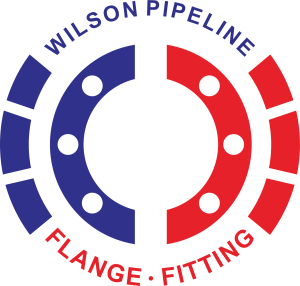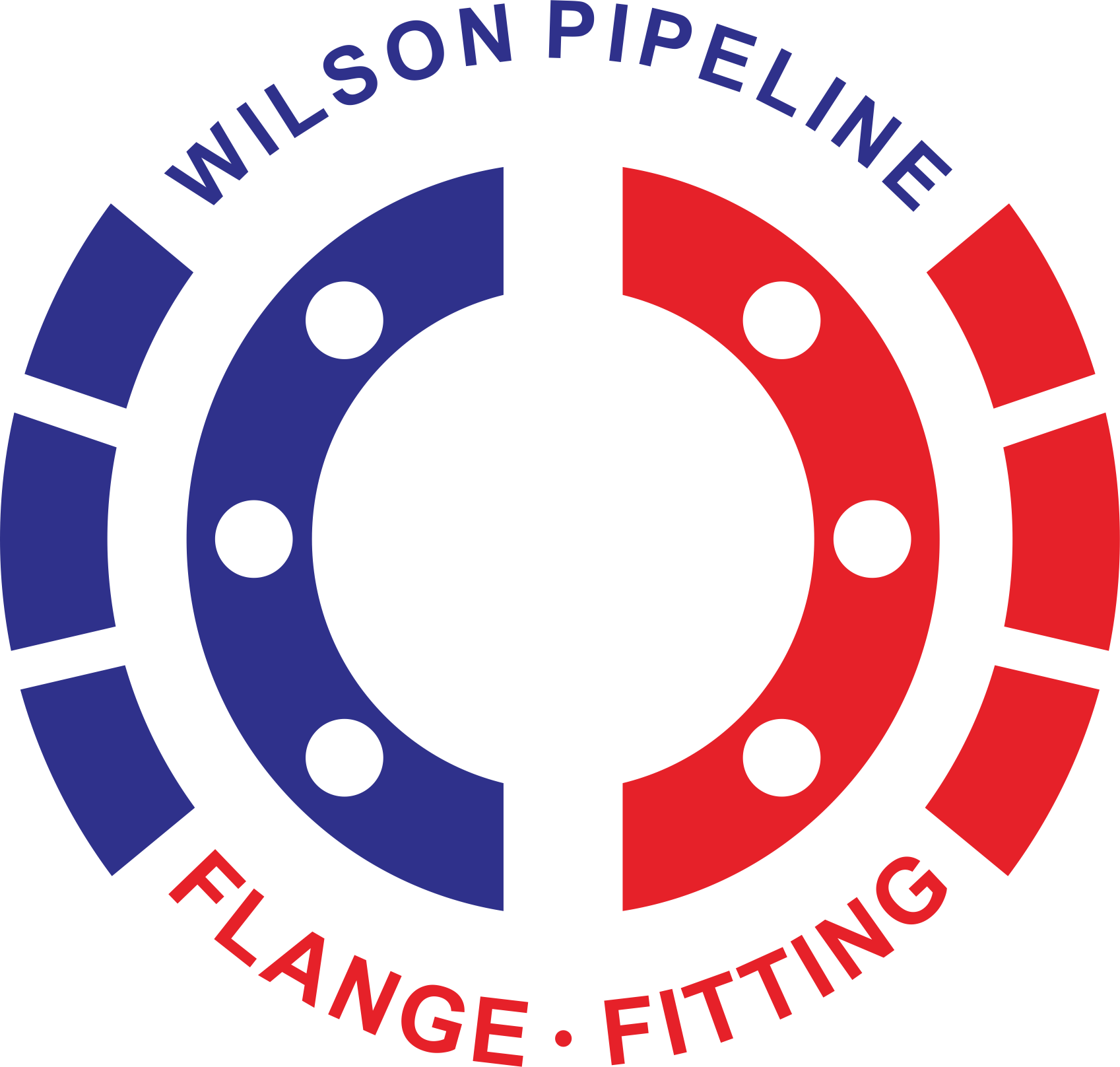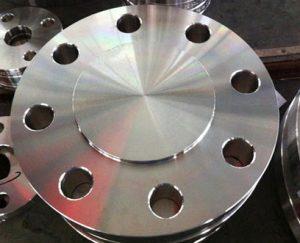
Types of flange sealing surfaces
Flanges are available with different types of sealing faces to accommodate the gasket. ASME B16.5 and B16.47 specify different types of flange sealing faces, including protruding, concave and convex, small and large tongue and groove faces, and ring joint faces for ring shaped metal gaskets.
Raised Face RF
A raised face flange is the most common flange used in fabrication plants and is easily identified. It is called a raised face because the gasket’s load-bearing surface protrudes above the bolting surface. This sealing surface allows the use of many different forms of sealing gaskets, including non-metallic flat gaskets and metal composite gaskets such as metal wound gaskets and double jacketed gaskets.
The protruding face flange concentrates the pressure in a smaller gasket area, thereby increasing the pressure capacity. The diameter and height of the raised face varies depending on the flange pressure class and size, with the pressure class determining the height of the sealing face.
ASME B16.5 specifies a seal face roughness of 125 to 250 µin Ra (3 to 6 µm Ra) for protruding face flanges.
Height of face
For CLASS 150 and 300 flanges, the height of the sealing face is approximately 1.6 mm (1/16 inch). In both pressure classes, for all flange suppliers, the total flange height H and flange flange flange thickness B include the thickness of the sealing face in their catalogs or brochures.
In the CLASS 400, 600, 900, 1500 and 2500 pressure classes, the height of the protruding face is approximately 6.4 mm (1/4 inch). In these pressure classes, for most flange suppliers, the total flange height H and flange flange thickness B do not include the thickness of the sealing face.
Full-Flat FF
The gasket joint surface of full plane is the bolted joint surface. Full-flat flanges are typically used for cast flanges.
Full-flat flanges are not allowed to be connected to a protruding flange.ASME B31.1 states that when a full-flat cast flange is connected to a carbon steel protruding flange, the protruding face of the carbon steel flange must be removed and replaced with a full-flat face.
Ring joint face (RTJ)
Ring joint face flanges are mainly used for high pressure (class600 and above) and/or high temperature (427°C and above) service. They have recesses machined into the sealing surface to accommodate the ring gasket. When the bolts are tightened, the gasket is in close contact with the inner surface of the groove, creating a metal hard seal.
Ring joint face flanges often have a protruding surface, and the ring groove is machined into the protruding surface. The protruding surface does not constitute a sealing component. In a flange seal, the two faces may come into contact with each other, in which case the pressed gasket cannot assume additional bolt tension, and vibration and movement cannot further compress the gasket or reduce the joint tension.

Ring Joint Gaskets
Ring gaskets are metal sealing rings suitable for high temperature and high pressure service. The tightening force of the bolt wedges the softer gasket into the harder flange material, producing an efficient seal.
Commonly used ring gaskets are Type R, manufactured to ASME B16.20 for ASME B16.5 flanges, CLASS150 to CLASS2500. Type R ring gaskets are available in two types: oval and octagonal.
Octagonal gaskets have a better seal than oval gaskets and are the preferred type. However, only oval gaskets can be used with the old round-bottom grooves. Today’s flat bottom grooves can be used with both octagonal and oval gaskets. Ring shims are always less rigid than flanges.
Tongue and Groove Face (T & G)
Tongue and groove face flanges must be used in pairs, with one flange machined with a tab and the other with a groove.
Tongue and groove face flanges include standardized large and small tongue and groove faces. The difference between a tongue and groove face and a dimple face is that the inside diameter of the tongue and groove face does not enter the bottom of the flange, so that the gasket can be fixed with its inside and outside diameter. Tongue and groove faces are commonly used for pump covers and valve covers.
Concave and Convex Surfaces
Flanges with concave and convex faces must also be used in pairs. One of the flange faces extends the flange tab, and the matching flange has a machined concave face. The depth of the concave face is 3/16″ and the height of the convex face is 1/4″ high, both precision machined. The outer diameter of the concave face accommodates the flange gasket.
Advantages and Disadvantages of Tongue and Groove Face and Concave and Convex Face
Advantages include excellent sealing performance, precise positioning and accurate compression of the sealing material. Wide selection of sealing materials.
Disadvantages are commercial trading and cost. Raised face flanges are the most versatile flanges and are usually readily available from stock to match existing valves, flanges and sealing materials. The other side of the coin lies in some of the strict regulations that must be enforced during the piping design process. Have you ever ordered a double-sided concave valve, or a single-sided concave? In this case, did you specify all the convex surfaces in the entire fluid direction. This should be true in any flange or vessel connection.





